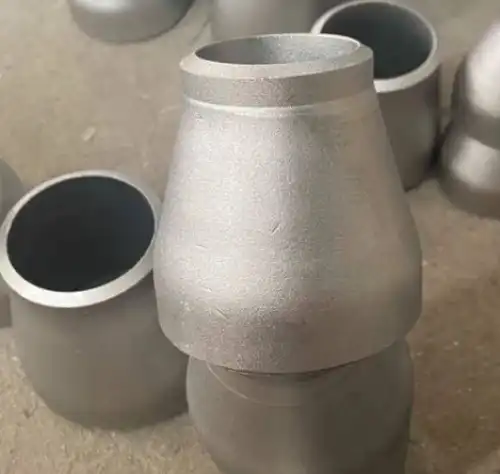When it comes to piping systems, eccentric reducers play a crucial role in ensuring smooth flow and efficiency. Whether you're an engineer, plumber, or DIY enthusiast, understanding these components can save you time and costly mistakes. Let’s break down everything you need to know—without the jargon overload.

What is a Concentric Reducer?
A concentric reducer is a symmetrical pipe fitting that looks like a cone, tapering evenly from a larger diameter to a smaller one. It’s used when the centerlines of both pipes need to align perfectly. Common applications include:
-
Vertical piping systems (to prevent air pockets)
-
Pump inlets where flow stability is critical
Fun fact: The word "concentric" comes from Latin, meaning "having a common center."
What is the Difference Between a Concentric and Eccentric Reducer?
Here’s where things get interesting. While both reducers resize pipe diameters, their designs serve different purposes:
| Feature | Concentric Reducer | Eccentric Reducer |
|---|---|---|
| Shape | Symmetrical, cone-like | Flat on one side, sloped on the other |
| Alignment | Centers match | Off-center (top or bottom aligned) |
| Best For | Vertical flow, avoiding turbulence | Horizontal lines, drainage, gas systems |
Key takeaway: Use an eccentric reducer when you need to avoid trapping air or sediment (like in pump suction lines).
What is the Purpose of an Eccentric Reducer?
An eccentric reducer isn’t just a "wonky cone"—it solves real-world problems:
-
Prevents air accumulation: The flat side (installed on top) ensures gases escape in liquid systems.
-
Drains fluids completely: When installed flat-side down, it helps sludge or liquids flow out without residue.
-
Saves energy: By maintaining consistent flow rates in HVAC or industrial pipelines.
Pro Tip: In chemical plants, eccentric reducers are often used with the flat side up to avoid cavitation in pumps.
What is the Difference Between Concentric and Eccentric Swage?
Swages are cousins to reducers, but with threaded or beveled ends. Here’s the lowdown:
-
Concentric swage: Think of it as a mini concentric reducer—ideal for small-scale, high-pressure systems.
-
Eccentric swage: Functions like an eccentric reducer but with threaded connections, often used in instrumentation lines.
Why it matters: Swages offer more connection flexibility, while reducers prioritize flow control.
Final Thoughts
Choosing between an eccentric reducer and its concentric counterpart boils down to your system’s needs. Got horizontal pipes? Go eccentric. Working with verticals? Stick to concentric. And if you’re ever unsure, remember: the flat side of an eccentric reducer is your best friend for drainage or degassing.
Still have questions? Drop them below—we love geeking out over pipe fittings!
Tel: +86-29-89506568
WA/Mob: +86-17778976690
Email: linhui@lhtitanium.com











